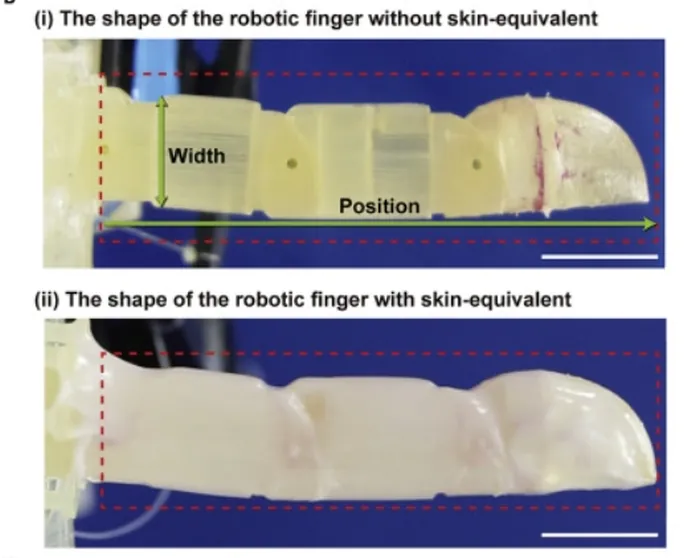© ROOT-NATION.com - Use of content is permitted with a backlink.
With the development of artificial intelligence technologies, the range of work performed by robots is expanding. Robots that used to perform routine tasks in closed factories now appear in our homes and provide a variety of services. When a robot interacts with a human in an unpredictable human society, the robot must have a soft, skin-like coating to protect the human and the robot itself from contact. Small scratches on a soft surface caused by contact with the environment can cause large cuts if left unattended, but cleaning and repairing an injured robot every time might be very expensive.

Researchers from the University of Tokyo have developed a method of covering the robot’s finger with living human cells. The skin, created with the help of new technology, has water-repellent properties and is able to regenerate.
Scientists have used real human cells to create a skin for the android. The two-layer coating, consisting of connective tissue and outer epithelium, mimics the appearance and tactile properties of human skin. In addition, it is capable of self-healing. The technology of making artificial leather is described in detail in the Matter journal.

To create the skin, the scientists loaded the robot’s finger into a cylinder filled with a solution of collagen and dermal fibroblasts, the main components of the connective tissue of human skin. The cells of this mixture, as researchers have shown, are compressed and tightly cover the artificial finger.
After forming the inner layer, the developers placed the finger in a solution of human keratinocytes. These epithelial cells, scientists explain, give artificial skin texture and create a barrier for moisture retention.

In experiments, scientists have shown that the coating is strong and elastic enough to withstand dynamic movements, such as flexion and extension of the finger. In addition, researchers have shown the skin’s ability to heal wounds. In case of violation of the integrity of the coating, it was enough to use a collagen bandage, which gradually transformed into the skin, tightening the wound.

Researchers note that the artificial skin they created is not yet perfect. It cannot last long without the supply of nutrients and the removal of cell waste. Scientists are currently working on the introduction of sensory neurons, hair follicles, nails, and sebaceous glands into the cell structure.
You can also help Ukraine fight with Russian occupants via Savelife or via an official page of the National Bank of Ukraine.
Read also:
- A particle-candidate for dark matter has been discovered. Now for sure
- A strange type of radio burst was discovered 3 billion light years from Earth



